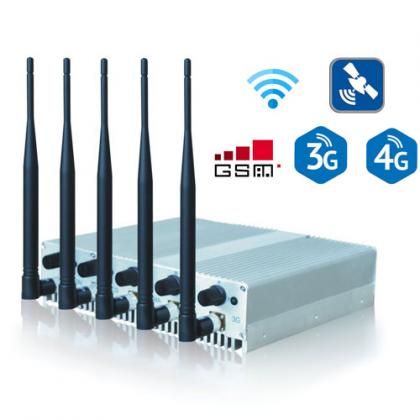The difference between ordinary mobile phone signal jammers and high-quality shielding
Signal shielding, generally speaking, can be divided into ordinary shielding and high-quality shielding.
The technical characteristics of ordinary shielding are mainly based on the principle of shielding, using a large number of low-power or high-power devices to fight, and staying on simple technical solutions.
High-quality shielding, its technical features adopt strong signal digital point frequency hopping technology, which reduces radiation 150 times compared with ordinary shielding technology; mainly outdoor shielding, reducing indoor radiation power hundreds of times; using multi-channel combining technology, full-frequency antenna replacement N frequency division antennas are suitable for wireless remote viewing and lay the foundation for distributed antennas. Distributed antenna technology is used to reasonably allocate shielding power, disperse the power signal, reduce antenna radiation, provide dozens of times of efficiency, and eliminate dead corners and leakage points. ;Jike's unique TD synchronization technology only blocks downlink pilot time slots for China Mobile's 3G (TD-SCDMA) and 4G (TD-LTE) networks to eliminate interference from base stations, and has been recognized by the China Mobile and Radio Management Committee , while reducing radiation dozens of times.
4 major factors that affect the cost-effectiveness of prison cell phone jammer systems

Factor 1: Shielding is efficient
The so-called shielding efficiency refers to whether the shielding effect has blind spots or leaks. There may be transmitting base stations with strong mobile phone signals near some prisons. In order to achieve a good shielding effect, a lot of materials and energy will be spent, and the cost will increase accordingly. Therefore, the better the shielding effect, the higher the cost will be. In actual application, the shielding requirements in prison areas are generally higher. If there are slight loopholes or blind spots, violators may seize this loophole, allowing mobile phones to be used in the original shielded area, and the original intention of shielding mobile phones cannot be achieved.
Factor 2: Time between failures
If the original trouble-free service life is 1 year, and the actual trouble-free life reaches 3 years, the cost-effectiveness will be tripled.
If the original stipulated trouble-free service life is one year, in actual use, failures often occur within half a year. Although the warranty is free, the risks caused are immeasurable, human resources are wasted, and the corresponding cost performance is greatly reduced.
Factor three: external interference
If external interference is not considered, simple shielding will be relatively easy, as long as the shielding power is increased. However, it is necessary to ensure that there are no blind spots or leakage points in the shielding area. The power intensity in the shielding area is relatively large. If there is a little leakage, the external interference will be great. This requires full consideration during shielding design and technical control to achieve accurate and efficient shielding without external interference.
Factor 4: Cost
The cost should follow the signal jammer and budget. You should not blindly choose cheap products, nor should you think that the more expensive ones are better. In actual selection, reputation is very important. It is also necessary to conduct on-site inspections of past cases and personally test the shielding effect before making your selection.













